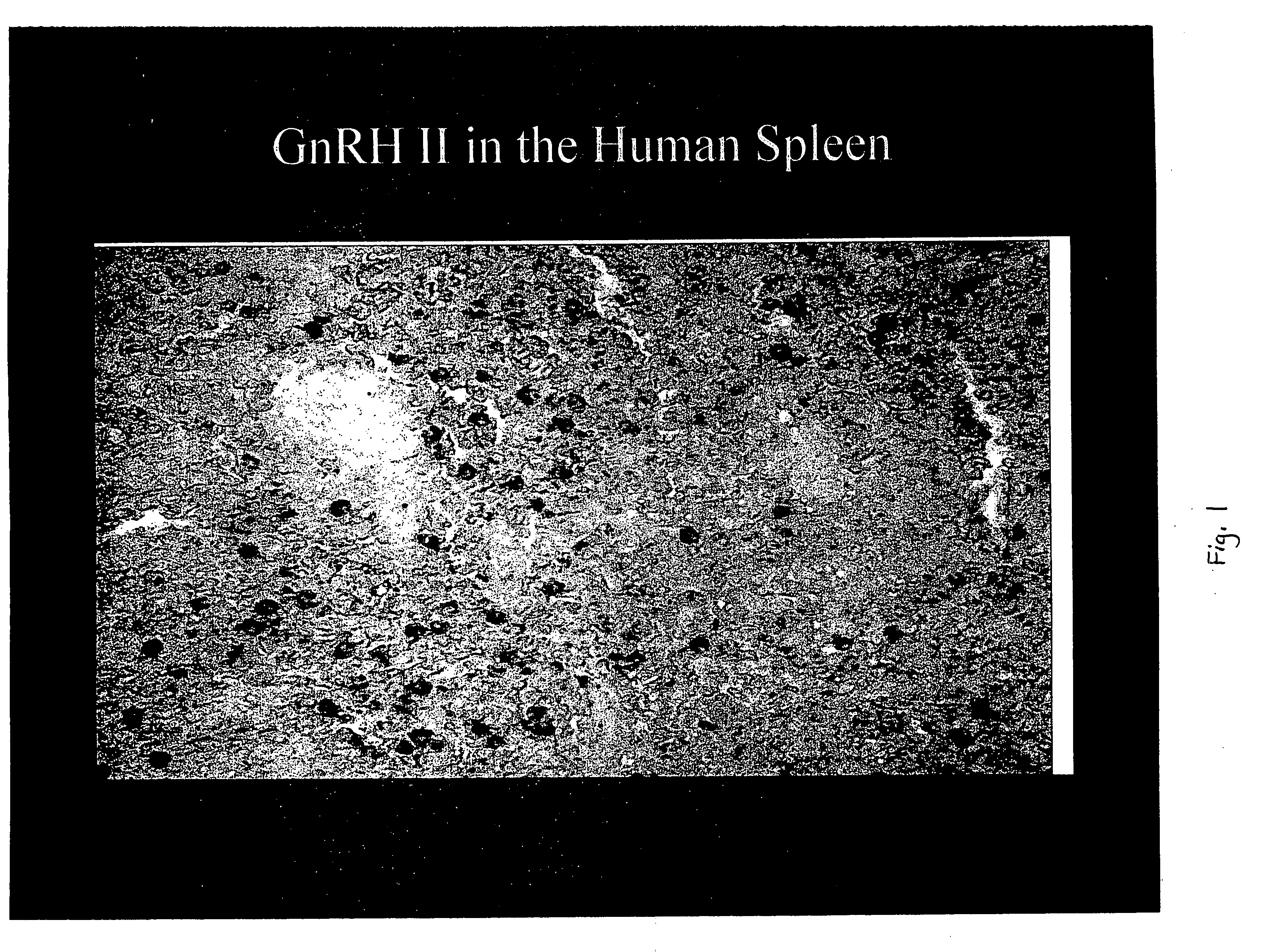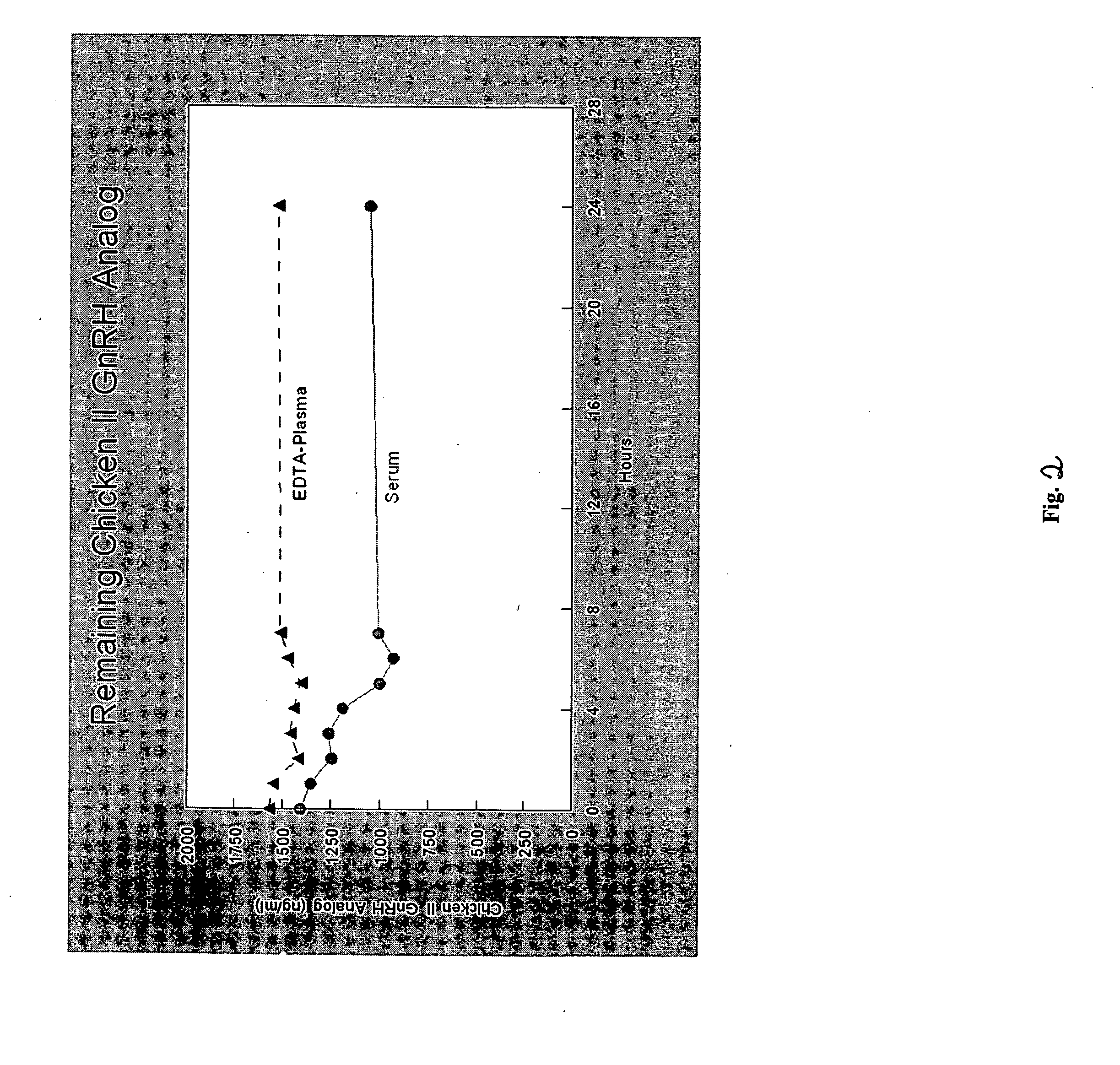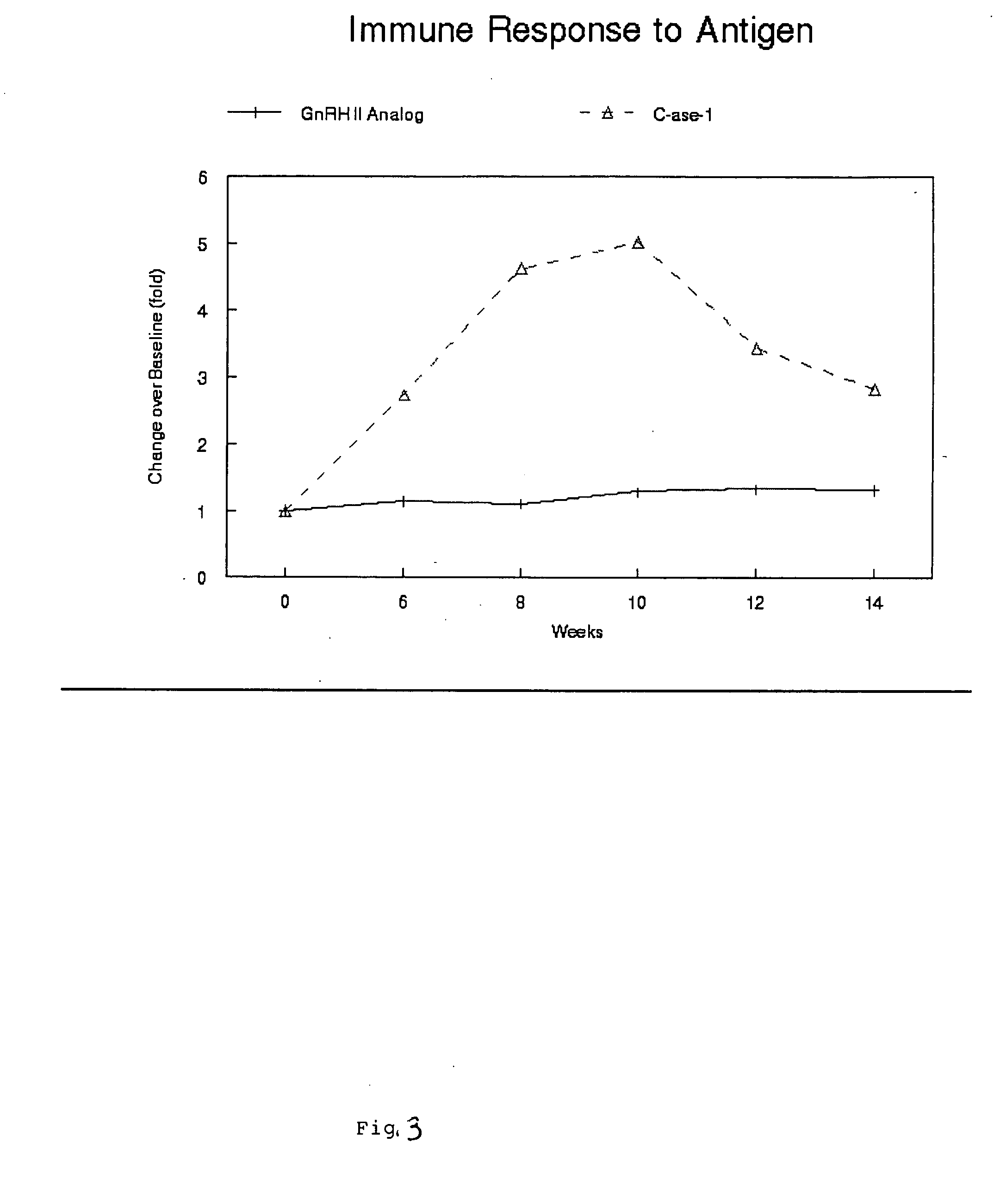Non-mammalian GnRH analogs and uses thereof in the immune system
- Summary
- Abstract
- Description
- Claims
- Application Information
AI Technical Summary
Benefits of technology
Problems solved by technology
Method used
Image
Examples
example i
Design of Non-Mammalian GnRH Analogs
[0097] The present example outlines how analogs (SEQ ID NO: 2 and SEQ ID NO: 4) of non-mammalian GnRH with increased activity in immune system tissues are designed.
[0098] Existing GnRH I analogs are designed for activity at the pituitary GnRH receptor and with extended stability in the circulation of individuals. Yet, the existing data indicate that the immune system tissues have a high affinity GnRH receptor which differs from that in the pituitary. In addition, the degradation of GnRH I (SEQ ID NO: 5) is different in the immune system. Therefore, prior known pituitary GnRH I analogs have not been designed for use at immune system sites, and potent non-mammalian GnRH analogs have not been designed for use at immune system sites. The present invention provides potent non-mammalian GnRH analogs (SEQ ID NO: 2 and SEQ ID NO: 4) for use at immune systems sites.
[0099] Non-mammalian analogs of GnRH (SEQ ID NO: 2 and SEQ ID NO: 4) were synthesized by ...
example ii
Localization of Non-Mammalian GnRH in Tissues of the Immune System
[0100] Tissue of the immune system were examined for the presence of non-mammalian GnRH (SEQ ID NO: 6 and SEQ ID NO: 7) in their cells. The presence of non-mammalian GnRH (SEQ ID NO: 6 and SEQ ID NO: 7) in the tissues of the human other that the T cell has not been previously described. This presence demonstrated in immune cells of mammalian tissues that non-mammalian GnRH isoforms are produced in the mammals and that they are present in the immune system.
[0101] Human tissues from the thymus, spleen and lymph nodes were fixed and sectioned and plated by sections on glass slides. The human tissues on the glass slides were incubated with anti-GnRH II ({fraction (1 / 100)}) for 1 hour at RT. The tissues were then washed with phosphate buffered saline and anti-rabbit gamma globulin conjugated with biotin is incubated for 4 minutes at 55 C. The slide was rinsed in buffer followed by blocking of the endogenous peroxidase ac...
example iii
Stability Studies of GnRH Analogs
[0102] The present example demonstrated the stability of the GnRH II analogs (SEQ ID NO: 2). The added stability of these non-mammalian analogs would effect a substantial increase in bioactivity.
[0103] The enzymatic degradation of the non-mammalian GnRH (SEQ ID NO: 6) and its analog (SEQ ID NO: 2) were studied using whole blood and plasma stability studies. A peptidase present in the immune system was used. Non-mammalian GnRH analogs (SEQ ID NO: 2) were designed with these specific criteria in mind. The stability of these non-mammalian GnRH analogs (SEQ ID NO: 2) to the enzymatic activity of the peptidase and in immune system cells were examined.
[0104] The stability of most potent receptor-active non-mammalian GnRH analogs (SEQ ID NO: 2) in the presence of peptidase and immune system cells was identified. Each of these analogs was then studied for their ability to resist degradation over time of incubation with the immune system cells at 37° C. Th...
PUM
| Property | Measurement | Unit |
|---|---|---|
| Length | aaaaa | aaaaa |
| Acidity | aaaaa | aaaaa |
Abstract
Description
Claims
Application Information
 Login to View More
Login to View More - R&D
- Intellectual Property
- Life Sciences
- Materials
- Tech Scout
- Unparalleled Data Quality
- Higher Quality Content
- 60% Fewer Hallucinations
Browse by: Latest US Patents, China's latest patents, Technical Efficacy Thesaurus, Application Domain, Technology Topic, Popular Technical Reports.
© 2025 PatSnap. All rights reserved.Legal|Privacy policy|Modern Slavery Act Transparency Statement|Sitemap|About US| Contact US: help@patsnap.com



